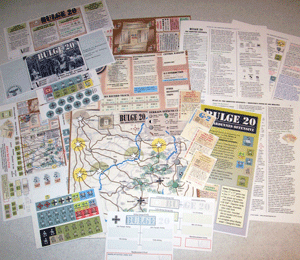Way back in the before times that are the not now (1977), a young game designer named Steve Jackson created an entirely new genre of games when Metagaming Concepts published a small game called OGRE. The game was deceptively simple to play and remarkably deep for its price and size. This combination of low price and small components were the central features of what came to be called "Microgames." Metagaming Concepts published a significant number of Microgames during their tenure, including OGRE, G.E.V. a sequel to OGRE, and the MELEE/WIZARD games to name a few. These games were a huge financial success for Metagaming, but creative differences led to Steve Jackson leaving that company to form his own company Steve Jackson Games.
When Jackson left Metagaming, he took a couple of things with him that he used to launch his company. These were the SPACE GAMER magazine that Metagaming had been publishing and his OGRE and GEV designs. For a variety of reasons, he was unable to take MELEE/WIZARD with him and would not be able to publish those under the Steve Jackson brand until approximately 30 years later. As a Steve Jackson publication, SPACE GAMER went from a journeyman publication that had a significant "house" focus, to one of the leading hobby gaming news magazines of its era. Though it had its share of house content, the pages of the Jackson published SPACE GAMER were filled with articles about games like D&D and TRAVELLER and its coverage of the CHAMPIONS role playing game contributed to that game's larger success.
But the magazine was only a small part of what would help to transform Steve Jackson Games from a small game company to one of the most successful privately owned game companies in the business. To be sure, it's no Hasbro or Asmodee, but it is a company with gross incomes around $5.5 million. It's still classified as a small business, but it's a cornerstone in the gaming hobby. One of the key reasons the company was able to grow was its swift publication of the OGRE game and a series of new games based on the microgame model, games that came in sturdier plastic pocket boxes.
While there are several games in the pocket box series, the two best known are OGRE and CAR WARS and these are the games that helped to secure Steve Jackson Games' future success. Both of these games, in their early print runs, had short and easy to understand rulebooks, counter sheets, and maps to be used for play. They contained months of deep game play for a very inexpensive price. Both OGRE and CAR WARS became individual product lines, but some of my favorite pocket games are lesser know and equally robust games that cover a variety of themes. These themes ranged from a post-apocalyptic future where a kung fu death cult fought against the evil clone masters to to hunting for Dracula in London, and from the small tactical operations of a Raid in Iran to the massive strategic challenge that is the Battle of the Bulge (simulated with only one page of rules in ONE PAGE BULGE). The games were fun and inexpensive when they were published.
A typical example of a Pocket Box game is UNDEAD. The game was published in 1981 and recreates the battle between Van Helsing's vampire hunters and the dread Count Dracula. The game also includes the ability to expand play by including the possibility of playing a certain consulting detective in a variant scenario. It can be played as either a two player game, or as a mini-role playing game. The box for the game was a medium hardness plastic that had the ability to hang in a store display.
Inside the box was a double printed poster sized sheet that contained the rules and two maps that could be used in play. The first was a map of the city and the second was a tactical map. In addition to the poster sheet, there was a counter sheet that included all of the counters one needed for play. Players would have to carefully cut out the counters, but they featured engaging and colorful artwork.
Until recently, the only way to get these games was to track them down on eBay and pay a potentially exorbitant price. That all changed this month with Steve Jackson Games' launch of a Pocket Box project on Kickstarter. Now you can get them for $20 a piece, less if you take advantage of some of the pledge levels. Most of these games are absolute gems, and it's nice to see them in print again...this time with upgraded components.






























